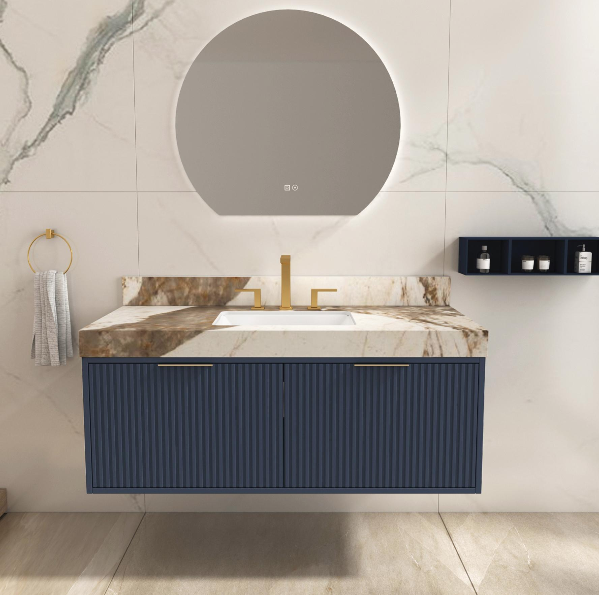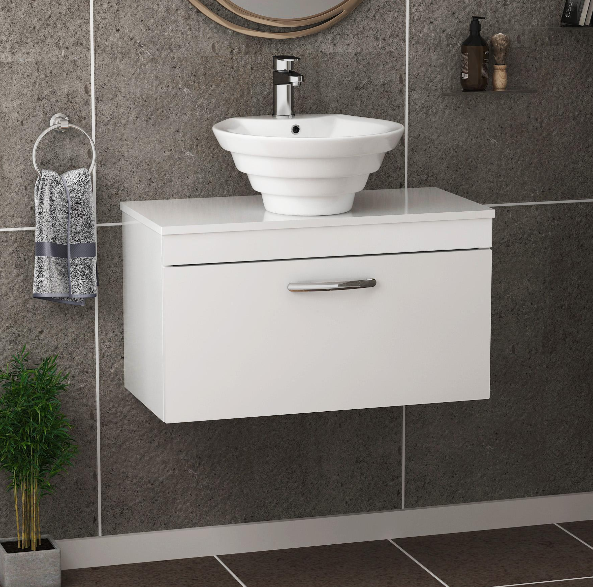Choosing the Perfect Vanity Unit for Your Small Bathroom: A Comprehensive Guide
Featured Partner Post
Small bathrooms demand smart solutions and a vanity unit can prove to be a practical and visually appealing addition in a compact space. As opposed to a single wall-mounted or pedestal basin, a vanity unit hosts a sink while also providing adequate bathroom storage. You can purchase wall-mounted vanities that free up floor space or invest in stylish designs on slender frames with great aesthetic appeal. However, how do you decide what vanity unit is right for your small bathroom? In this post, we will cover everything you need to know to make an informed decision.
Assess Your Bathroom Space
The type and size of the vanity unit that you can install in your bathroom highly depend on the available space. Before delving into the various options available, you will need to assess the size of the room. Because bathroom suites come with so many different components - from the toilet to the bath itself - the task of assessing your bathroom space is so important to make sure that everything doesn't feel cramped. Take into account not only the vanity fixture dimensions but also the amount of clearance required for the opening of the cabinet doors and drawers.
Measure the width: You will need to measure the width of the space from its widest point. General widths for vanity units for small bathrooms range from 400 mm to 900 mm.
Measure the depth: Similarly, measure the depth from the back of the wall to the furthest point the vanity could sit.
Consider clearance: Make sure you account for the clearance of doors and drawers - is there enough space for them to be opened at their widest point?
Is there plumbing available? A vanity unit requires water inlet and outlet connections.
Measure the height: Consider the height of the vanity unit from the ground up.
Image credit: Royal Bathrooms
Consider the vanity unit types available
To decide if a wall-hung or a freestanding vanity unit would be best for your small bathroom, read through the summarized points below. For really small bathrooms, you may want to consider a space-saving vanity unit with a toilet (combination unit).
Wall-Hung:
Maximizes floor space to create a sleek, modern look
As it is mounted on the wall it will require sturdy wall support
Easy to clean underneath as there is no obstruction to the floor
Contemporary and modern aesthetics
Typically offers little less storage space to freestanding units
Adjustable height for a customized look and accessibility
Often the more expensive option
Freestanding:
Traditional and classic design
Easier installation
Cleaning around the unit may be more challenging
Maximised storage
Fixed height - less flexibility in placement makes it not suitable for all users
Generally a more affordable option
Determining Your Storage Needs
You will need to consider your storage needs before deciding on the type of vanity unit that would best suit you. Assess your requirements for storage based on the items you wish to keep in the bathroom (these may include toiletries, towels and cleaning supplies). Decide whether you want a storage room with cabinets or drawers (drawers are better for smaller items like toothpaste and face cloths, while cabinets are better for towels and cleaning bottles).
Choosing the Right Material and Finish
The material and finish of your vanity unit contribute significantly to its aesthetic appeal and durability. You will need to consider the overall style of your bathroom and choose materials and finishes that complement the existing decor, while also withstanding the challenges of a high-moisture environment.
Gloss: Good for modern and contemporary bathrooms; small bathrooms to add a sense of space and light; easy to clean, but may show fingerprints and scratches more easily.
Matt: Good for contemporary and traditional bathrooms; larger bathrooms; provides a more subtle and muted look; tends to hide fingerprints and scratches better
Satin: Versatile for various bathroom styles; provides a balance between the reflective nature of gloss and the muted look of matt; good for concealing minor imperfections
Textured: Adds depth and interest to the bathroom; hides fingerprints and scratches well; is suitable for creating a unique and textured look in both modern and traditional bathrooms.
Wood Veneer: Adds a natural and warm touch to the bathroom; suitable for traditional and contemporary styles; requires proper sealing for moisture resistance.
Assessing Sink Options
The type of sink you choose will have a huge impact on the functionality and aesthetics of the bathroom. There are a variety of sink options available that work with a vanity unit:
Mid-edge Sink: features a raised edge that creates a distinct border
Minimalist Sink: simple and sleek design with clean lines
Compact Sink: a small, space-saving design
Semi-Recessed Sink: partially set into the countertop, partly extends out
D-Shaped Sink: Shaped like the letter D for a unique and modern look
Undermount Sink: Installed beneath the countertop for a seamless look
Budget
Like any home improvement project, it’s essential to establish a budget for your vanity unit. While there are options available at various price points, determining your budget early on in the process will help narrow down choices and prevent overspending. Don’t forget to factor in installation costs and if you need to have water inlet and outlet pipes put in.






